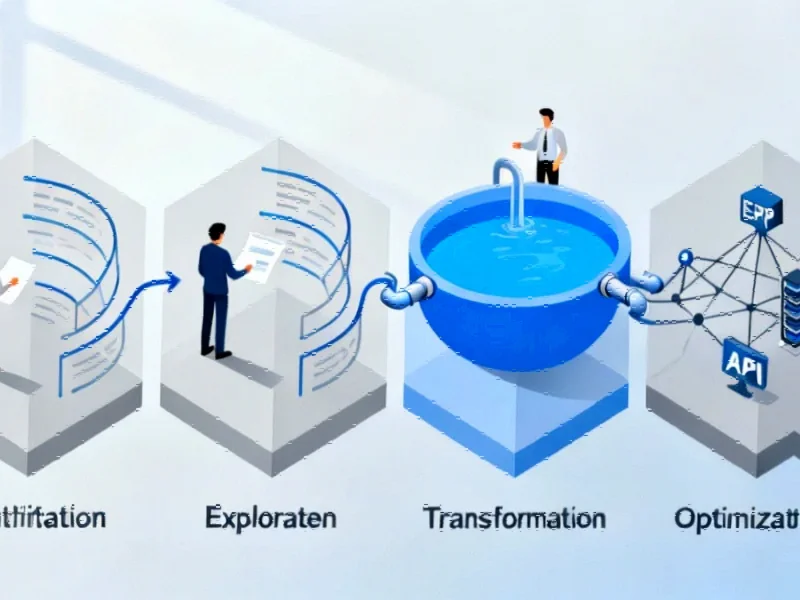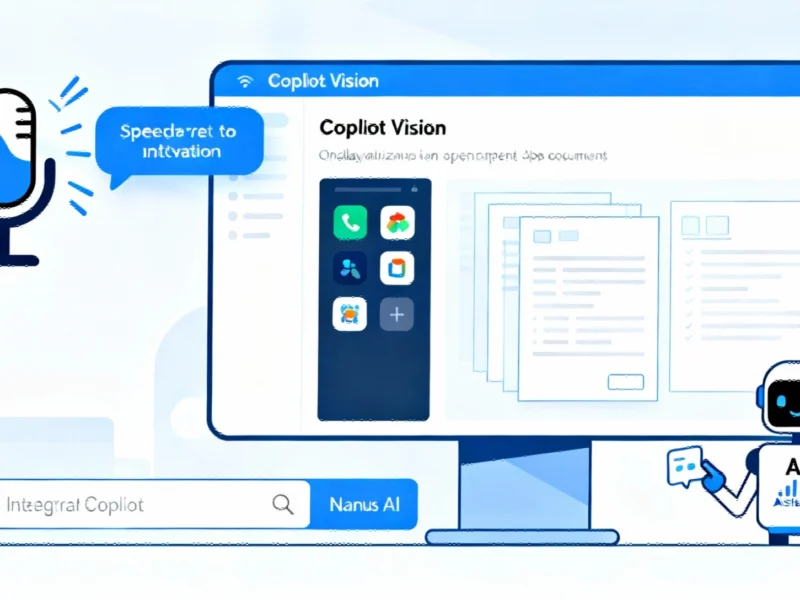AI Momentum Builds in Corporate Treasury Functions
Corporate treasury departments worldwide are accelerating their adoption of artificial intelligence technologies, particularly generative AI, according to recent analysis from Citi. The banking giant’s global survey of 75 corporate treasuries across multiple industries and regions indicates a clear directional shift toward AI integration despite ongoing implementation challenges.
“The potential productivity gains from AI are too significant to ignore,” said Ron Chakravarti, Citi’s Global Head of Client Advisory Group, in the report. Sources indicate he characterized generative AI as “the getting-things-done tool for treasury,” highlighting its practical applications in financial operations.
Four-Stage Maturity Model Guides Implementation
The report outlines a comprehensive four-stage maturity model for AI adoption, beginning with identification of use cases and progressing through exploration, transformation, and optimization phases. Analysts suggest each stage requires measurable results, structured data frameworks, and continuous human oversight to ensure successful implementation.
According to the analysis, nearly 60% of treasurers report identifying at least one practical generative AI application, while 40% plan to increase their AI investment within the next two years. The most common applications reportedly include liquidity forecasting, reconciliation processes, and automated report generation.
Data Quality Emerges as Primary Barrier
Despite growing enthusiasm for AI technologies, data fragmentation remains the single biggest obstacle to effective implementation. The report states that more than 70% of surveyed treasurers cited incomplete or fragmented data as a major constraint limiting their AI ambitions.
“Without those foundations, AI will only replicate human errors at greater speed,” the Citi analysis warns. The report recommends establishing centralized data repositories, creating API connections to enterprise resource planning systems, and defining clear ownership for data accuracy as essential prerequisites for successful AI deployment.
Trust and Transparency Concerns Persist
The need for absolute reliability in treasury functions presents significant cultural challenges for AI adoption, according to industry experts cited in the report. “Treasury is the ultimate guardian,” said Joseph Neu, Founder and CEO of NeuGroup. “There must be 100% trust in the numbers. Generative AI has been slow to deliver at this level of trust.”
This skepticism reportedly stems from broader concerns about governance, explainability, and maintaining clear audit trails. The analysis suggests that AI’s credibility in financial applications depends heavily on these transparency factors, even as the technology improves operational speed and precision.
Early Adopters Demonstrate Practical Approaches
Progressive treasury teams are already implementing strategic approaches to build organizational readiness. “As a first step, we invested time to train the treasury team and trigger a change mindset,” said Alexander Reijrink, Global Head of Corporate Finance and Risk Management at Philips. His comments, documented through his professional profile on LinkedIn, highlight how leading organizations are preparing their teams for technological transformation.
Citi frames such efforts as essential to building the human readiness needed for successful AI adoption. The report indicates that treasurers who collaborate early with technology and data teams position themselves more effectively to transition from experimental pilots to transformative implementations.
Ecosystem Evolution and Real-World Applications
The transformation Citi envisions is reportedly already visible across the financial ecosystem. Treasury teams are increasingly moving away from manual spreadsheets toward platforms powered by predictive analytics and data intelligence. For example, Bank of America’s CashPro platform gives treasurers real-time visibility into global cash positions, illustrating how structured data enables faster, more confident decisions.
Meanwhile, experimental applications are testing the boundaries of automation. Some firms are building systems that can recommend or execute internal transfers while maintaining human review and full traceability. These prototypes resemble what Citi describes as the “transformation” stage of AI maturity, where models assist but don’t yet act independently.
Citi’s Own Technological Advancements
Citi’s Treasury and Trade Solutions group is applying these concepts to real transactions, according to the bank’s most recent quarterly update. The institution is reportedly extending tokenization and programmable money capabilities to corporate clients, enabling instant cross-border liquidity and more automated cash management. These developments align with what Citi’s architectural vision describes as treasuries connected through APIs, governed by data standards, and designed for continuous, real-time operation.
Expanding Strategic Role of Treasury
The shift extends beyond technical implementation to encompass treasury’s evolving strategic position. As AI and cyber risk converge, treasurers are becoming more integral participants in enterprise planning, overseeing not only liquidity but also payments infrastructure, data quality, and digital resilience. This expansion reflects broader industry developments where technological capability increasingly defines operational effectiveness.
The analysis suggests that organizations embracing this expanded role while maintaining appropriate privacy and security frameworks will be better positioned for successful digital transformation. Recent technology initiatives across the financial sector demonstrate this convergence of capability and caution.
Measured Implementation Recommended
Despite positive momentum, the report emphasizes that full AI deployment should proceed in phases, anchored by human validation and measurable outcomes. According to the findings, 61% of surveyed treasurers prefer starting with small pilots that demonstrate quick wins before scaling implementations. This cautious approach reflects understanding of both the potential and limitations of current AI systems in critical financial functions.
The authors warn that premature automation without proper oversight could erode credibility rather than enhance it. As organizations navigate these related innovations in financial technology, maintaining balance between automation and control remains paramount for sustainable transformation.
This article aggregates information from publicly available sources. All trademarks and copyrights belong to their respective owners.
Note: Featured image is for illustrative purposes only and does not represent any specific product, service, or entity mentioned in this article.



